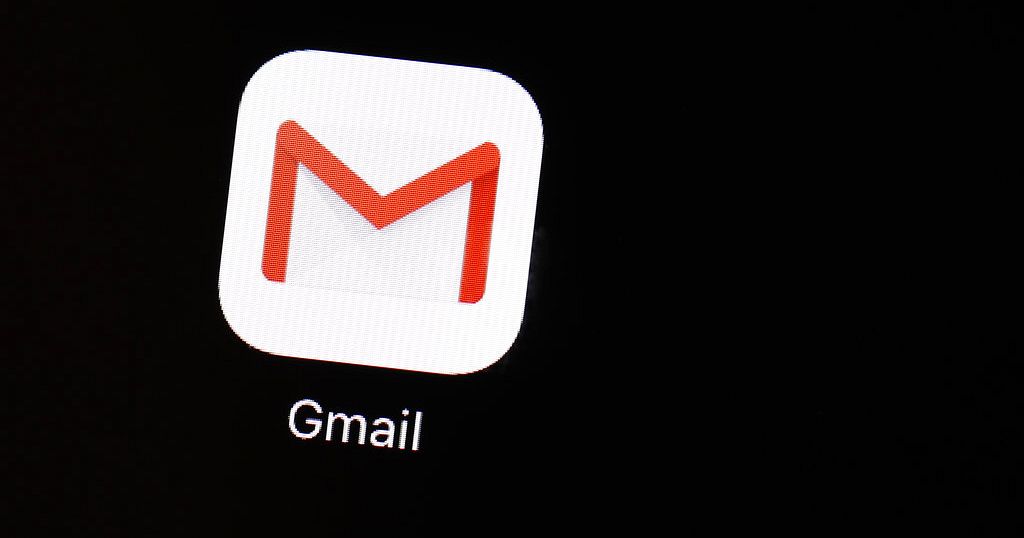
Google co-founders Larry Page and Sergey Brin always loved good pranks. So they decided to unveil something no one would believe was possible on April Fool’s 20 years ago.
It was Gmail, a free service boasting 1 gigabyte of storage per account — an amount that sounds almost pedestrian by today’s standards, but at that time was 250 to 500 times more than the capacity offered by the then-leading webmail services run by Yahoo and Microsoft.
Besides its quantum leap in storage capacity, Gmail also came equipped with Google’s search technology so users could quickly retrieve some tidbit from a old email, photo or other personal information stored within its service. It also automatically threaded together a string of communications about the same topic so everything flowed together as if it was a single conversation.
It was all so mind-boggling at the time that shortly after The Associated Press published a story about Gmail late on the afternoon of April Fool’s 2004, readers began calling and emailing about how the news agency had been duped by Google’s pranksters.
The AP knew Google wasn’t joking about Gmail because one of its technology writers had been abruptly asked to come down from San Francisco to its Mountain View, California, headquarters to see something that that the company promised would be worth the trip.
After arriving at a still-developing corporate campus that would soon blossom into what became known as the “Googleplex,” the AP reporter was ushered into a small office where Page was wearing an impish grin while sitting in front of his laptop computer getting ready to show how Gmail worked. “I think people are really going to like this,” Page predicted.
As with so many other things, Page was right. Gmail now has an estimated 1.8 billion active accounts — each one with 15 gigabytes of free storage bundled with Google Photos and Google Drive. Even though that’s 15 times more storage than Gmail initially offered, it’s still not enough for many users who — as Page hoped — rarely see the need to purge their accounts.
The digital hoarding of email, photos and other content is why Google, Apple and other companies now make money from selling additional storage capacity in their data centers. (In Google’s case, it charges anywhere from $30 annually for 200 gigabytes of storage to $250 annually for 5 terabytes of storage). Gmail’s existence is also why other free email services and the internal email accounts that employees get for their jobs offer far more storage than was ever fathomed 20 years ago.
Gmail was a game changer in several other ways while becoming the first building block in an internet empire that extends beyond Google a search engine that remains so dominant that it’s the target of a major U.S. antitrust case aiming to foster more competition and innovation.
After Gmail came Google Maps, then came the acquisition of YouTube, followed by the introduction of the the Chrome browser and the Android operating system that powers most of the world’s smartphones. With its explicitly stated intention to scan the content of emails to get a better understanding of users’ interests, Google also left little doubt that digital surveillance in pursuit of selling more ads would be part of its expanding ambitions.
Although it immediately generated a buzz, Gmail had a limited reach in its early days simply because Google initially had enough computing capacity for a very small audience.
But that scarcity created an air of exclusivity around Gmail that drove feverish demand for an elusive invitations to sign up. At one point, invitations to open a Gmail account were selling for $250 apiece on eBay. “It became a bit like a social currency, where people would go, ‘Hey, I got a Gmail invite, you want one?’” Buchheit said.
Although signing up for Gmail became increasingly easier as Google opened more of the massive data centers that power all its online services, the company didn’t begin accepting all comers it opened the floodgates as a Valentine’s Day present to the world in 2007.
A few weeks later on April Fool’s Day in 2007, Google would announce a new feature called “Gmail Paper” that offered the option of having Google print out their email archive on “94% post-consumer organic soybean sputum” and then mail them to the account user. That time, Google really was joking around.
Read More: World News | Entertainment News | Celeb News
African News









